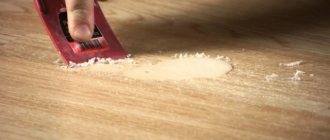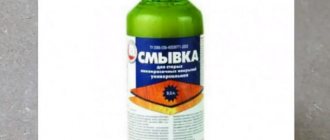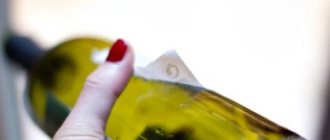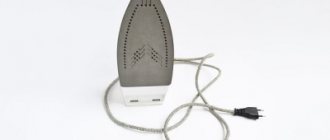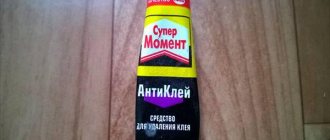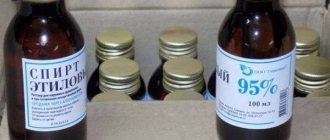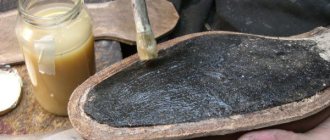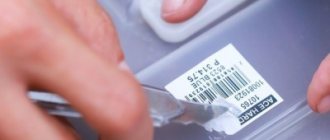Car owners use tuning for their vehicle because they want to improve its appearance. Some people use body kits and unique decorations, which are expensive and have no problems with dismantling.
Budget motorists strive to improve the appearance of their personal vehicles by sticking various pictures on their body. Often stickers on a car arise if the owner wants to make money and sticks advertising slogans. Glue can get on the hood or windshield completely by accident, but it is very difficult to remove.
Removing superglue from the car body
A friend and I were gluing moldings on a car door with superglue and accidentally covered the paintwork with it.
You cannot scrape off the glue; the paint will be damaged. Trying to wipe off the substance immediately after a mistake is also fraught - instead of neat transparent drops, you will get cloudy stains. There are a number of ways to solve the problem being discussed on the Internet - starting with treating the affected area with zero sandpaper, followed by polishing the body, and ending with applying a rag moistened with water to the dried glue for a whole day so that the glue soaks and comes off.
The first is too steep and expensive, the second is difficult in the conditions of the Siberian autumn and the lack of a warm garage. Someone else is trying to heat it with almost a construction hairdryer in an attempt to dry out the layer of glue so that it cracks and falls off. I don’t know, I don’t have a hairdryer, and I don’t recommend you try it.
What remains is chemistry. They sell special products for removing superglue from hard surfaces, but I didn’t even try to scrub them off; the reviews are contradictory. I found a proven folk solution. So…
How to remove tint adhesive yourself
The film can be glued with different types of glue, so the cleaning methods differ.
The adhesive applied to the film is an adhesive coating. It connects materials of different structures by surface adhesion. It usually contains resins, several types of adhesives, bitumen, vinyl and other components. The service life of the tint coating depends on the quality of the adhesive, so cleaning the glass from adhesive residues is not always easy.
The most common way to remove glue from car windows is by scraping or cutting. This procedure is carried out using a special spatula, scraper or plastic card. If you don't have them, you can use a regular razor blade. In this case, the scraper must be held at an angle of approximately 30-40 °.
The remaining sticky base must first be moistened with a soap solution. To speed up the dissolution process, you need to add a few drops of ammonia to the liquid. During cleaning, you need to be extremely careful not to get hurt or scratch the surface.
The procedure for removing adhesive residues mechanically is quite long, but after it the car windows will shine.
Special means
There are many commercially available products for removing adhesive residue from tinting:
- Spray “Kerry” and other special film removers. Thanks to aerosol packaging, they are easy to apply to the surface and effectively dissolve the glue. It is necessary to apply it to the adhesive stain and wait a little. And then clean the surface with a soft spatula. The product is toxic and expensive.
- Super Moment “Anti-glue” is a new drug created specifically for dissolving adhesive stains. Its consistency resembles a gel, it is convenient to use.
- The rust converter “Star Wax” helps to wash off glue and works quickly. Sold in hardware stores. The converter must be applied to the car glass, and then the remaining film must be scraped off and the surface thoroughly wiped.
- Biosolvent “Cytosol” , which dissolves vinyl and bitumen components. Not hazardous to health. Its main disadvantage is that the drug is difficult to find on sale.
- Adhesive cleaners ZM 08184 and ZM 08984 clean well and do not scratch the glass surface. These products are sometimes called “orange” for their unique smell.
- “Profoam 2000” is a universal household cleaner that is used to remove tape and various stickers.
- “Bug Blitz”, “Resin & Bug Remover” and similar liquids used to clean the body and headlights from traces of insects and silicone deposits.
- “Anti-rain Turtle Wax Clear” is a water-repellent product. The active substance is capable of dissolving adhesive stains.
You can try to wipe the glue off the film from the glass with any dishwashing detergent. An aqueous solution with abundant foam is made and the glass is wetted. After drying, it is washed off with a sponge with a soft abrasive, that is, the hard side of a dishwasher. And wipe it dry with a rag.
How to remove dried superglue from a car body?
Dimexide is a nasty thing, so you should only work with it with gloves. This drug is used as an adjuvant to speed up the penetration of other drugs through the skin. On automobile forums they write that Dimexide is toxic, but this is a clear exaggeration. However, it is not recommended to work with it indoors. It’s better outside or in a large ventilated garage box, wearing a mask.
We put on gloves/mask, moisten cotton wool (if you don’t have a “q-tip”, a piece of clean, coarse cloth will do) with “Dimexide” and begin to rub the dried glue, trying not to touch the plastic. As soon as you feel that the glue has softened and become viscous, collect it on cotton wool (rags, a rag) or clean it off with a scraper.
A thin layer of glue begins to come off almost immediately, after two or three minutes; With the thicker ones, you will have to tinker, alternating chemical treatment and scraping. Be patient. Keep an eye on the cotton wool (fabric, rag) - the rags lined with the removed superglue must be changed periodically. Once finished, rinse off any remaining product from the surface to be treated with water and wipe with a dry cloth.
This is what my problem looked like before processing:
Yes, I know that moldings are usually glued on with M3 double-sided tape.
After processing, whitish traces remained, but the glue was practically invisible:
Most likely, the whitish traces are the remains of glue, smeared in a thin layer. Obviously, he didn't get it right. Based on its chemical composition, Dimexide should not damage the paintwork. In any case, remove the glue carefully, in good light, and have a clean rag and water ready to wash off the chemicals if something happens. And don’t forget about plastic - Dimexide corrodes it. Good luck.
Source
Materials required for work
Here is one option for how to remove superglue residue from a car body in a budget way. To do this you will need:
- Dimexide solution - you can buy it at any pharmacy;
- Medical or household rubber gloves are a must (in medical ones it will be easier to do the work carefully, but they tear easily);
- A cotton swab wrapped around a wooden stick. If the stain of dried glue is small, then sanitary sticks, which are sold on every corner, are quite suitable;
- A small plastic or wooden scraper - you will need it to remove softened glue (an orange stick may be suitable if the motorist has a spouse - they are used by everyone who does their own manicure);
- Clean dry rags and clean water.
When working with dimexide, you need to be careful so that the substance does not damage the respiratory tract. For this reason, it is better to carry out work in a ventilated area. A mask won't hurt either.
The work is carried out as follows. The swab is moistened with dimexide, and the glue stain is gently rubbed. The substance acts on dried glue, softening it. When you feel that it has softened, you need to use a scraper or dry rag. The main thing is not to spread the glue on the body.
If the stain is large and thick, then the glue will have to be removed in layers. During the treatment with dimexide, the cotton swab must be changed so as not to rub the remaining glue. After removing all residues, the surface to be treated is washed off with water and wiped dry. Often whitish marks remain after treatment. Basically this is a thin film of glue that has not been completely removed. Due to its composition, dimexide does not affect the paintwork, but it is not recommended to work with it on plastic, since the product will be damaged by the chemical.
But in most cases, motorists are faced with the need to remove the remains of a car sticker (for example, badge 70 or “U”). All such accessories are made of vinyl, which is resistant to temperature changes and moisture. To ensure that the sticker is securely fixed to the surface, manufacturers use high-quality glue. In some cases, the sticker can last more than three years. During this time, it will become so firmly fixed on the surface that it will be impossible to do without improvised means.
Of course, what materials the car owner will need depends on the method he uses. Basically, to do the job well, you may need:
How to remove super glue? Using cream and soap
Soak the adhesive stain in warm water using a damp cloth. Then apply a mixture of hand cream and dish soap - powder or liquid. This may be the only way you can remove the adhesive without removing the paint. And it still won't prevent damage to the paint surface.
using super glue remover
Apply super glue remover or another acetone-based substance to the stain. Use as little as possible and lightly rub the area with a soft cloth until the glue dissolves. If you do it quickly enough, don't let the acetone soak into the paint for very long. You can remove the glue while only removing the wax.
Possibility of paint damage
Repaint the car's surface if you end up removing paint. Make sure you know the type of paint used on your vehicle—most models use urethane. For best results, sand off all nearby paint. Apply three coats of primer, two coats of paint and three coats of sealer.
Wash and dry the entire car. Then apply a fresh coat of wax, especially to the touched-up area. Apply a small amount of polish to the area and wipe with a soft cloth.
Useful tips How to remove super glue
If you need to repaint your car, get the paint code. So that you can find exactly the color shade you need. The code is often printed on a sticker on the inside of the car door. And someone at a paint or auto parts store will use that code to find the color they want. Primer, paint and clear coat typically require 15 minutes to 1 hour. Between individual coats, and then they should remain overnight before applying the next substance. Check the instructions on each for exact time periods.
How to properly remove tint material
There are several options for removing tint material. To achieve good results, you must strictly follow the technology of the procedure.
Remove with a sharp movement
In this case, it is recommended to pick up the tint with a sharp object and, holding it tightly with your fingers, sharply pull it off. This method helps to quickly remove the film, but is considered to be of insufficient quality.
Slow removal
The film can be removed slowly, gradually heating it. First, you should pick up the edge with a sharp object, and then apply hot air with a hair dryer. The material should be heated to a maximum temperature of +60 degrees. Only in this case will it be possible to carefully remove the material. During heating, the adhesive mixture comes off with the film.
Using soap solution
If it is impossible to heat the glass, it is permissible to remove the tint using a soap solution. In this case, you should pry the film with a knife and carefully pull it off, applying a soap solution to it. To reduce the adhesive characteristics of the tint, it should be poured generously with liquid in the joint area.
How to remove superglue: the best methods for various surfaces
Good afternoon, dear readers! Whoever invented superglue deserves at least a Nobel Prize. It’s hard to imagine how many things glue saved from going to the trash, how much money it saved their owners. But its strength is not always a good thing. When an accidentally spilled composition gets onto surrounding objects and surfaces, it turns out that it is very difficult to remove it without leaving a trace.
To save the situation, you need to know how to wipe off superglue, how not to spoil the object from which it is being removed and how not to harm your health.
Aggressive means
It is necessary to use aggressive substances for cleaning with extreme caution, because... they can ruin the thing completely.
The most effective of them include:
Before using one of the above products, it is recommended to test on a small, inconspicuous place and only then begin work.
“Moment” and “Second” glues are considered especially durable. Therefore, the question most often arises is how to remove glue from plastic.
How does superglue work?
The substance that forms a strong connection on the glued parts is cyanoacrylate. The glue penetrates cracks and pores, filling them, and interacts with moisture particles contained in the air, tightly holding the surfaces together.
Trying to wash the glue off with water will cause it to harden even more.
The connection is not only durable, but also resistant to moisture, temperature changes and mechanical damage. Removal of contamination should begin as early as possible to prevent complete drying.
Cyanoacrylate is also interesting because it practically does not react with other substances, even solvents. Therefore, choosing an effective method can be quite difficult.
Method No. 1 (soap solution + newspaper + scraper)
In search of a solution to how to remove glue from tinting, many resort to a simple method. At the same time, a soap solution and mechanical action are used. You need to prepare:
- Soft scraper for cleaning glass;
- Spray bottle;
- Old newspapers;
- A solution of soap and water.
Cleaning instructions:
- Dilute the soap solution and place it in the bottle.
- Treat glass with a spray bottle.
- Place sheets of newspaper on the wet glass around the entire perimeter.
- Re-treat the glass with the solution.
- Maintain the humidity of the newspaper sheets for 10-15 minutes.
- At the end of the period, remove the newspaper from the glass.
- Use a scraper to remove any remaining adhesive.
Instead of a soft scraper, you can use any discount card.
How to remove superglue
There are four main groups of methods by which you can remove the adhesive composition. The greatest effect can be achieved if a set of measures is applied.
Mechanical techniques
This category includes manipulations that use force: scraping, rubbing, knocking, grinding.
The main disadvantage of such measures is the high probability of damaging the base and rendering the item unusable. If they are used to remove film from your skin, there is a risk of injury. Therefore, you need to be careful and try not to overdo it.
Impact of temperature
Although cyanoacrylate is able to withstand temperature changes, systematic increased exposure to heat or frost gradually destroys its structure. This can be used to remove stains using an iron, hair dryer or freezer. Typically these techniques are used to clean fabric.
Professional products
Manufacturers took care of consumers and developed a special product called “Anti-glue”. It quickly and effectively dissolves contaminants, but it cannot be applied to some materials: varnished and painted, as well as certain types of plastic.
Due to its high toxicity, children's clothes should not be treated with such a mixture. For the same reason, direct contact with skin should be avoided and gloves should be used.
Instructions are included with each product and must be strictly followed. Otherwise, there is a risk that the composition will not work or will damage the surface.
Chemical compositions
This includes any type of solvent: acetone and liquids containing it, “White spirit”, “Thinner 646”, “Dimexide”, gasoline, alcohol.
All these substances destroy cyanoacrylate, making the contamination easily removed. However, it is worth considering that they themselves are very aggressive, and therefore can harm the object being processed and ruin its appearance.
It is better to work with solvents in the fresh air or in well-ventilated areas, and also wear gloves and a mask!
Traditional methods
They come to the rescue if nothing more effective is at hand. They act more slowly, but are safe and will not cause harm to health. Here is a list of popular folk recipes.
Rules for removing glue from various surfaces
When working with superglue, drops can get on the parts being glued, the table, the floor, clothes and hands. And in each specific case the methodology will be different. But there are some general recommendations:
This is perhaps the most common problem. All it takes is one careless movement - and there will already be a sticky mark on your fingers and palms, to which something can instantly stick. Or the fingers will completely stick together.
There are many methods for removing adhesive film from skin. Let's name five of the most effective and safe ones.
Before using any of these techniques, it is advisable to soak your hands in hot, soapy water for 5 minutes.
Be sure to lubricate your hands with a nourishing cream after the procedure to prevent the development of irritation and help the skin recover.
In addition, it is permissible to treat the skin with a solvent, “Dimexide” or “Anti-glue”, but all of them are harmful to health, and therefore it would be wise not to rush with them and use them only as a last resort.
In general, you don’t have to do anything at all: in a couple of days the scales will fall off on their own. To speed up this process, simply wash your hands and use a scrub more often.
Textile
Another common problem is the composition getting on clothes or furniture upholstery. The method of eliminating trouble here often depends on the type of material: the thinner the material, the more delicate the handling must be. Be sure to first try any of the described recipes on an inconspicuous area of the item.
At the end of the treatment, do not forget to wash your clothes with washing powder.
Leather and suede
For such products, cleaning with Anti-Glue is recommended. You should treat the stain with the product, wait the prescribed time and carefully peel off the adhesive layer. Afterwards, wipe the surface with soapy water.
For suede you will have to use a whole range of measures:
You should not subject leather items to the procedure with an iron or hair dryer: they will be hopelessly damaged.
Tree
Wooden surfaces may vary. In some cases, it is necessary to save the untreated base; in others, drops of the composition fall on painted or varnished furniture.
Glass and tiles
These materials are smooth and pore-free. The adhesion of the adhesive deposit is not so strong, and therefore it is easier to remove it than with other bases.
Any chemical agent can be used. Cover the surface with a dampened cloth and leave for 20 minutes. Then all that remains is to pick up the film and remove it.
You shouldn't use beating here. There is always a risk that the glass will break and the tiles will crack. Sometimes it is justified to use a sharp knife or razor: you need to carefully scrape off the frozen layer from the glass. However, be extremely careful to avoid scratches.
Finally, you will have to wash the glass and tiles and wipe them to remove streaks.
If “Moment” accidentally gets on the screen of your phone or tablet, you can remove it with “Dimexide”. Use a cotton pad soaked in the substance to wipe the screen until the stain disappears. Afterwards, be sure to wipe the equipment with a damp cloth.
Safety precautions
When working with aggressive agents, you need a mask, gloves and goggles
Most chemicals and folk remedies are toxic and have a pungent odor that lasts for a long time. They can cause burns to the mucous surfaces of the respiratory system.
Contact with skin leads to the formation of wounds, so you need to work with them carefully.
Do not smoke while working and generally do not clean near an open fire or near hot objects. Concentrated vapors may cause fire.
Before carrying out work, you should take care to follow safety precautions and prepare safety glasses that will save your eyes from contact with chemicals. A respirator, or in extreme cases a gauze bandage, will protect the respiratory system. Rubber gloves will protect your hands from chemical burns.
Sometimes you have to tint windows on loggias and in apartments - glue a shading film on them. If you are tired of the darkening or the film needs to be replaced, you can do this in the same way as in a car: first remove the film, then wash off the remaining adhesive base.
Most glass cleaning compounds are flammable, have a strong, pungent odor, some are quite toxic and can even cause poisoning and damage to the nervous system if their fumes are inhaled. If they come into contact with the skin, they can cause a burn and penetrate the bloodstream. Therefore, when working with solutions, you must observe safety precautions:
- Do not clean glass near an open fire, any heat sources, including hot objects; with an increased concentration of fumes in the air, a fire can break out even from a spark;
- work in protective clothing and rubber gloves to prevent products from getting on your skin;
- To protect against harmful fumes, wear a respirator and goggles.
Effective and effective ways to remove super glue
For household repairs that require reliable fastening of broken parts, superglue is most often used.
Suitable for gluing most materials and drying quickly, it gives a fairly reliable connection. But if used carelessly, it can leave streaks and stains that are difficult to remove.
Special preparations and home recipes will help you deal with glue marks. In this article we will tell you how to remove super glue from various surfaces and objects.
How to remove “Moment” from a surface: which method to choose?
Superglue is a synthetic drug that is available in liquid form in small tubes designed for one-time use.
When applied to a surface, it quickly sets in air, giving reliable adhesion to the material. The adhesive property is ensured by the inclusion of cyanoacrylate in the composition . It is a water-insoluble substance that, when hardened, becomes resistant to mechanical stress and humidity.
To remove glue, it is necessary to use those means that can transform it from a solid state to a viscous one. In this form, the glue is easier to remove.
You can act on hardened glue in several ways:
| Method of influence | The essence of the method | Note |
| Mechanical | Physical mechanical impact (cutting, filing, etc. | Rough mechanical impact can lead to damage to the stained surface |
| Temperature | Application of high or very low temperature | Despite its resistance to temperature fluctuations, targeted heating leads to softening of the composition, and freezing leads to its fragility. |
| Special means | The use of purchased products that are designed to soften the adhesive and remove it | The price of such products is higher than home recipes, and the volume of product purchased is small |
| Chemicals | Homemade recipes based on drugs available in the household | Many substances that can dissolve superglue are already in the medicine cabinet, in the kitchen or around the house. |
The best cleaning result can be achieved using several methods at once, for example, softening the glue with chemicals and subsequent mechanical removal.
Common mistakes made by car enthusiasts
As we have already noted, incorrectly carrying out the procedure for removing the adhesive base of the sticker can result in subsequent repair work for the car owner to restore the paintwork. Here are the actions of motorists that will definitely lead to damage to the car body:
- When using a construction hair dryer, the maximum temperature is used, due to which the varnish and paint deteriorate;
- In the process of removing a thick layer of adhesive base, a metal spatula or scraper is used (the paint is scratched);
- Chemicals are used that effectively corrode glue residues, but at the same time have an aggressive effect on the paintwork;
- In addition to chemical treatment, a hair dryer is used (many people know that many chemical processes are enhanced by high temperature).
The listed methods should be avoided as much as possible if, in addition to removing the sticker, the car owner also wants to preserve the paintwork of the car. With careful handling of the body, there is much less chance of damaging the car to such an extent that a complete or partial repaint of the vehicle is required.
How to scrub at home?
The easiest ways to deal with glue that gets on a clean surface is to use the products that are at hand:
Acetone
Acetone is a solvent used to remove paint and superglue. Work order:
Acetone can lead to smearing of superglue, so all work must be carried out as carefully as possible.
White spirit, gasoline
White spirit and purified gasoline are suitable for use as a stain remover for complex types of stains, and as solvents for various types of glue. To do this, soak a rag with the selected solvent and actively rub the surface stained with super glue.
Dimexide
Dimexide is a medical preparation that can be used as a glue solvent and to remove stains.
Application procedure:
The downside of Dimexide is a pronounced unpleasant odor.
Alcohol
Alcohol-containing solutions can act as a superglue solvent:
Soda (salt)
Salt and soda are in powder form. The abrasive qualities allow these substances to exert a mechanical effect:
For large drips this method is ineffective.
Oil
Vegetable oil or another product that has a high percentage of fats will help in cases where nothing else is at hand. A sufficient amount of oil must be used; it should well cover the entire surface of the glue stain.
If the adhesive trace is located on a vertical surface, then using a swab made of rags or cotton wool, oil should be applied repeatedly. After softening, the stain is cleaned off. The surface will need to be additionally treated with a degreasing compound to remove all the grease.
How to clean the rear window of a car from glue
It is impossible to clean the heated rear window of a car using a scraper or blade. The heating filaments can be damaged, so it is better to use other methods.
When removing film from the rear window, proceed in the following order:
- Remove all seals from the window. This will provide free access to the edges of the tint film.
- Wet the glass with the prepared solution, paying special attention to the top part of the tint. The solution should penetrate under it.
- Separate the coating from the glass and carefully pull it down with both hands. Wipe off any remaining glue immediately.
Top 3 special tools
If simple home methods are ineffective, you can use special purchased medications. They are distinguished by high efficiency and quick achievement of results.
Anticlay Super Moment
“Super Moment Antiglue” is one of the most popular and popular drugs that can dissolve superglue. It is produced in small tubes of 5 grams. The product is sold in a sealed tube, which costs about 120 rubles.
Right before use, a cap is screwed onto the tube, which pierces the factory sealed membrane. Using the thin nose of the nozzle, anti-glue is applied to the required area.
The great popularity of anti-glue is explained by its advantages:
Despite the small volume, the amount of anti-glue placed in the tube is generally enough to remove stains caused by using one tube of superglue.
Second Anticley
The remover comes in small packaging – 3 grams per tube. Cost – from 60 rubles per tube. The product allows you to remove stains accidentally left by glue and eliminate improper gluing of materials.
Application is very simple:
The product is very easy to use, inexpensive, and effective. But if a fairly large area of the object is stained with glue, you will need 2-3 tubes of anti-glue.
Cleaner Contact
The manufacturer produces the cleaner in two types of packaging:
In both cases, the Contact is well applied and distributed. The drug costs about 100 rubles. A small volume is sufficient for one use in most cases.
If the surface is not cleaned properly the first time, the application of the cleaner can be repeated. This situation can arise with thick, old superglue drips.
Features of removal taking into account the type of material
Working with superglue requires extreme care. Otherwise, there will be drips, leaking drops of glue and streaks. They can be eliminated in different ways, but you must take into account the material of the surface that needs cleaning.
Tree
Wooden surfaces differ from each other:
| Type of wooden surface | Prohibitions | Permissions |
| Varnished or painted | It is not recommended to use solvents that are aggressive in their impact, as well as to exert mechanical impact - this can damage the coating | Oil, other fats |
| Untreated wood surface | Oil, fats | Grinding |
| Chipboard or plywood | Oil, fats | Acetone, vinegar, Dimexide, |
Tile, glass
The smooth, non-porous surface of tiles and glass allows you to resort to various methods of cleaning the surface from glue.
In addition, a very smooth surface gives less strong adhesion to the glue. Therefore, it will be easier to remove it.
You can use any of the listed chemical methods , as well as special products that work on the principle of dissolving glue.
Tile and glass surfaces should not be subjected to intense sharp mechanical stress, such as impacts, as the material may crack and split. Read more about removing super glue from glass here.
Plastic, silicone
Plastic and silicone surfaces can be cleaned of superglue using special products, as well as recipes based on the following substances:
The advantage of silicone is its plasticity; this quality can be used by bending and unbending an object during the process of removing glue.
There are many types of plastic, so before using a solvent on a surface for the first time, it is advisable to conduct a reaction test on an inconspicuous area . Read more here.
Items made of fabric
Textiles stained with glue require special care. Items of clothing or upholstery can be very difficult or even impossible to clean. The type of fabric should be taken into account.
Most often, the following methods are used to clean the material:
The thinner the material is stained, the more delicate the treatment should be. Read more here.
Suede and leather
Homemade recipes or anti-glue can be used for processing. You must try to soften the adhesive layer, and only then remove it.
Among the solvents used, one of the following can be used:
Metal
To remove superglue from metal objects, you can use it as a solvent:
If the surface is painted, it is necessary to check the reaction of the paint to the selected solvent.
Household appliances (TV, phone screen, laptop)
Soiled household appliances are cleaned similarly to the recipes for plastic. A special feature of care is to prevent the solvent from flowing into:
You should also not use solvents that contribute to the spreading and smearing of the softening glue.
A drop of glue falling on the floor is a fairly common occurrence. Dealing with the problem is not difficult if you know the type of coating.
| Coating | Glue Removal Method |
| Laminate | Dimexide |
| Linoleum | Any recipe |
| Parquet | Dimexide, Anti-glue, acetone |
After removing the glue, the floor must be washed, removing the solvent, and wiped dry.
Automobile
The use of solvents on cars requires special care, especially in relation to surfaces with paintwork.
Human skin
Very often, when working with glue, your hands get dirty. Several methods will help you cope with the problem, for example:
Each method has its pros and cons. When using them, the skin is adversely affected, so after removing the glue, additional hand care is necessary to help the skin recover.
Several methods will help you remove the adhesive film from your palms or unstick your fingers, but first, it is better to hold the dirty brushes for about 5 minutes in warm soapy water.
How to remove tinting from glass quickly and without nerves?
The question of how to remove tinting from glass arises quite often. There can be many reasons why you have to start shading: the old film fades, gets scratched, its edges peel off and spoil the appearance. Sometimes after purchasing a car it becomes clear that the tint is too dark or does not meet the standards.
Where it’s thin, that’s where it breaks.
Removing tint yourself is a complex undertaking that requires considerable patience and time. Although, knowing the features and simple secrets, you can cope with the task quite quickly. Old tint film sometimes begins to peel off from the surface of the glass along the perimeter. This is very annoying, and the driver wonders how to remove the tint? It would seem that if the film began to peel off on its own, then it should be easily removed from the entire area, but that was not the case. Attempts to remove the film entirely lead to the fact that it begins to tear off in fragments, and the closer to the center, the stronger the adhesion (sticking).
If the film somehow lends itself to tearing, then you can eliminate it by peeling off the edges for easy grip with your fingers. A sharp downward movement makes the glass clean. A similar trick can be seen in videos posted on the Internet, when traffic police officers remove tinting that does not meet the standard. Remaining glue can be carefully washed off with soapy water or a rag soaked in solvent. This is one of the answers to the question: how to quickly remove old tint?
How to remove old tint from glass using detergent?
If it is not possible to apply a quick detonation method, then, to solve the problem, you will have to turn to the classic and more common “auto-popular” options. You need to prepare some available tools and materials in advance:
- Blade for a straight razor and a special holder for it (scraper);
- glass cleaner "Mr. Muscle" or an aqueous solution of detergent "Fairy";
- sponge and rag.
If the film adheres firmly enough to the glass, then you can try to “cut it off” using a sharp blade.
During the work, it is necessary to press the cutting edge of the blade at a very sharp angle to the glass, as if cutting off a layer of film, but you must try not to break its integrity. When some part of the film is removed, it is pulled together by the detached fragment, and the gluing area is generously moistened with glass cleaner or a detergent solution (preferably warm). After removing the film, the glass will remain almost clean. This was an alternative answer to the question how to remove old tinting from glass?
How to remove old tint from glass using a hair dryer?
If among the tools in the car enthusiast’s garage there is a hair dryer, then the issue is generally resolved in a matter of minutes, although this method will require that there be two participants in the process. Many car enthusiasts have noticed that in the summer, when the car warms up very much, it is easier to remove the film. You can take advantage of the property of glue - to soften under the influence of high temperature.
Using a hairdryer, the outer surface of the glass (not the film, but the glass) is heated. The temperature of the glass should be between 40-70 degrees Celsius
It is important not to overheat the glass so that it does not burst or the film melts. One person warms up the glass on one side, and the other, meanwhile, carefully removes the film
If everything is done correctly, the film is removed very easily, and all the glue remains on its surface. This was the third answer to the question how to remove tinting from glass?
Good tips and secrets when tinting car windows
You can remove tinting from the rear window yourself only by heating it, since a scraper or solvent can damage the filaments of the rear window heating system. The operation should be carried out very carefully, heating the glass evenly over a large area.
Another secret that you should know is that the film adhesive has a silicone base, which dissolves well with warm soapy solutions, rather than solvents. It is better not to work with solvent at all, as this can harm the interior trim, plastic parts and human health.

